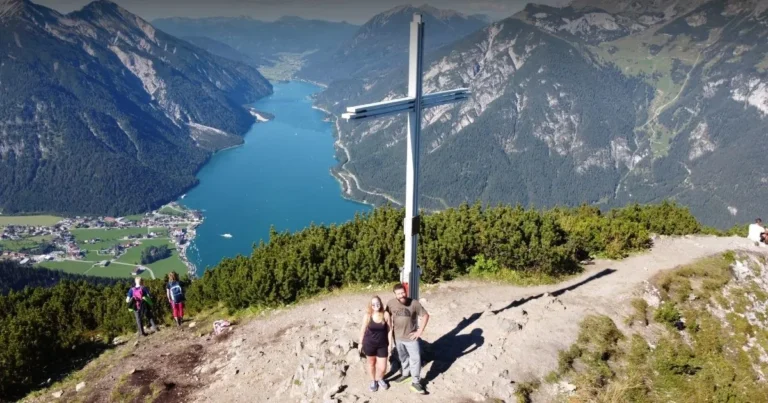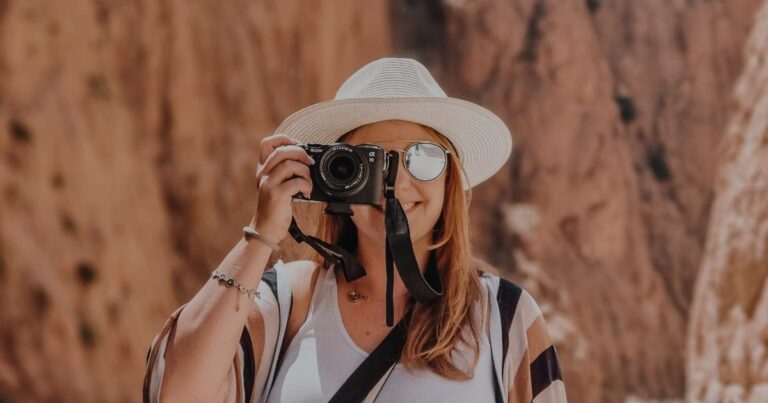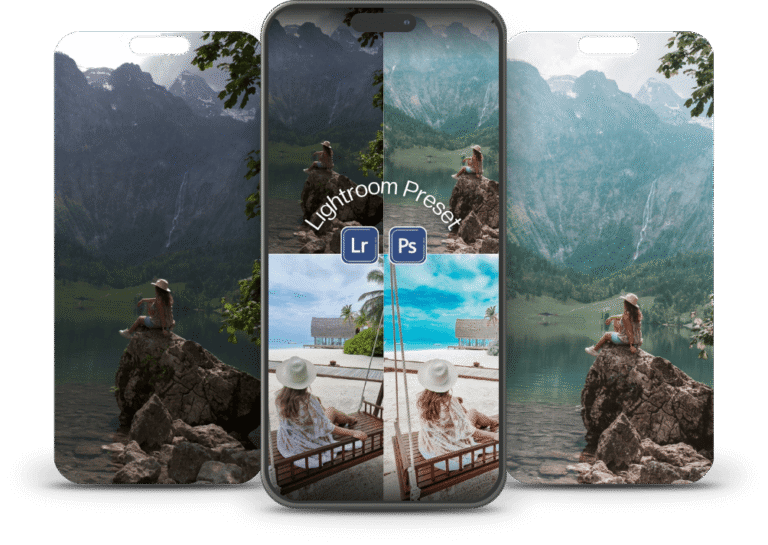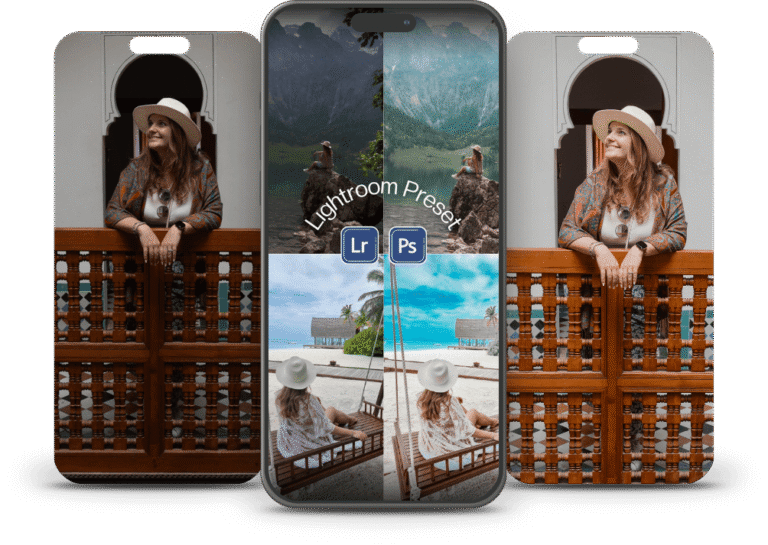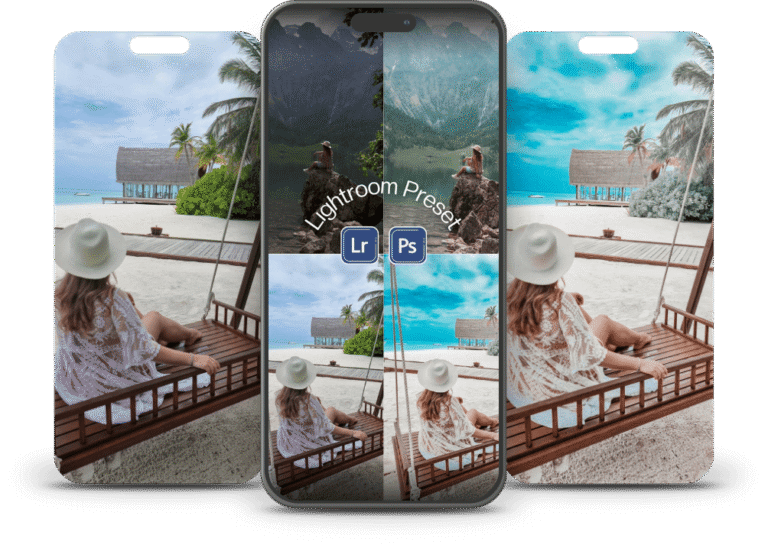Luggage & Bags: The Foundation of Smart Packing
When packing for both safari and city travel, opt for lightweight, durable luggage and a versatile daypack.
Recommended:
- Travel Backpack 60L: Ideal for Safari trip since the path to the lodges might be far and bumpy which can break trolleys
- Carry-on backpack: Follow flight size restrictions and is comfortable
- Foldable daypack: Lightweight and great for hikes or day trips
- Important Note:
Local flights have weight restrictions. Make sure you check that before packing.
Many Safari lodges have bumpy pathways to the hotel, which can break trolleys. Hence the travel backpacks are better, but if you don’t mind carrying your luggage sometimes, feel free to take a trolley.
Clothing: What to Wear on Safari & in the City
South Africa spans climates, from the semi-arid bush of Kruger Park to the breezy coastline of Cape Town, so versatility is key. I went in May and the weather was cold in the mornings and evenings and warm during the day.
Safari Clothing Must-Haves
- Neutral tones (khaki, olive, beige): Avoid bright colors that can attract insects or disturb wildlife.
- Lightweight, breathable fabrics: Think moisture-wicking and quick-dry.
- Layers for chilly mornings and evenings: It gets cold on early morning drives.
- Wide-brim hat with a chin strap so it doesn’t fly away.
Convertible hiking pants: Pants that zip into shorts are a great idea. I didn’t have it so I brought my quick-dry hiking pants with 50 UPF.
Cape Town Outfits
- Smart-casual wear: Pack a few stylish outfits for restaurants or wine country tours.
- Comfortable city walking shoes: for hiking or walking
- Swimsuit & beachwear: For Camps Bay or Clifton Beach is the weather is good
- Light jacket or windbreaker: Cape Town’s weather can shift quickly
Pro Tip: Pack a scarf or buff, it’s useful for dust, sun protection, or layering.
Footwear: Comfort is key!
Footwear can make or break your trip. Bring shoes suited for different terrains.
Must-Pack Shoes
- Sturdy hiking shoes or boots: For bush walks or rugged terrain.
- Comfortable walking shoes: Ideal for exploring Cape Town’s streets.
- Flip-flops or sandals: For downtime or beach days.
Note: Closed-toe shoes are best for everyday drives and bush walks.
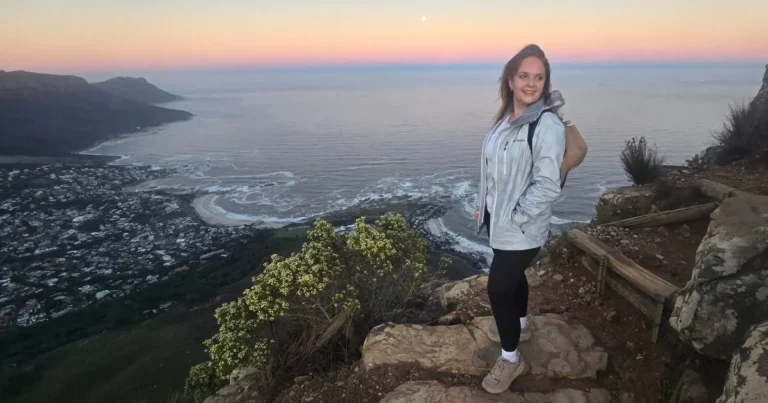
Photography Gear: Capture the Magic of Kruger Park
Whether you’re a pro or a hobbyist, you’ll want to photograph the Big Five and stunning landscapes.
Safari Photography Essentials
- DSLR or mirrorless camera (e.g., Sony A7CII)
- Zoom lens (at least 100mm–400mm) to photograph wildlife from afar (rent or buy)
- All-in-One Travel Lens: For daily photos at lodges, tribes and city
- Action Camera insta360 X4 (capture the moment,edit later) or GoPro Hero13 (POV)
- Binoculars Great for spotting animals
- Memory cards & extra batteries
- Camera bag or backpack: Secure equipment for the bumpy drives
Optional: A monopod or bean bag stabilizer for better wildlife shots from a safari vehicle. If you forget you can use your jacket as I did.
Want to level up your shots before editing?
Check out our guide: Best Travel Camera Gear for 2025 — perfect picks whether you’re just starting out or already a seasoned explorer behind the lens.
Travel Essentials: Don’t Leave These Behind
Here are the non-negotiables that make your Africa safari vacation seamless and safe.
Travel Must-Haves
- Reusable water bottle: Stay hydrated!
- High-SPF sunscreen
- Insect repellent
- Travel adapter
- First aid kit
- Dry bags or packing cubes (for organization)
- Headlamp or flashlight (useful at remote lodges).
You can find all of my travel essentials here.
Pro Tip: Safari vehicles can be dusty — bring lens wipes, wet wipes, and a dust cover for electronics.
Toiletries & Medications
While many lodges and hotels provide toiletries, some personal items are essential to bring.
Toiletries Checklist:
- Toothbrush, toothpaste, deodorant, shampoo, etc.
- Hand sanitizer and travel wipes.
- Lip balm with SPF.
- Prescription medications.
- Motion sickness tablets (for bumpy drives or boat trips).
Packing Tips for South Africa
- Pack in layers: Early mornings on safari can be 10°C (50°F) and midday over 30°C (86°F).
- Leave flashy jewelry at home: It can attract unwanted attention in cities and is unnecessary on safari.
- Check baggage allowances: Especially for local flights (e.g., to Kruger or between cities).
- Bring USD or ZAR cash: For tipping guides, drivers, and at smaller vendors.
- Download offline maps: Like Google Maps for Cape Town exploring.
Stay connected with an eSIM
For hassle-free connectivity during your South Africa trip, consider using an eSIM from Ubigi. It’s a convenient, contract-free solution that lets you stay connected from the moment you land, without hunting for local SIM cards. With affordable data plans and easy activation via app, Ubigi eSIM is perfect for travelers heading to both Cape Town and safari regions.
For a 16-Day Trip you can pack
- Tops
- Bottoms
- Jackets
- Dress for dinners
- Shoes
- Gear
- Other
Don’t overpack as you might change hotels multiple times in a trip like this. Pack onle the essentials and you can try to wash some clothes at some hotels. Find all of my travel essentials here.
Final Thoughts
A South Africa safari and Cape Town vacation is the trip of a lifetime. Whether you’re photographing lions in Kruger National Park or sipping wine in the Cape Winelands, packing well ensures you’ll enjoy every moment.
Be strategic: pack light, choose multifunctional gear, and prioritize comfort. And don’t forget to check out our recommended affiliate links to gear up for your journey!
Ready to book your Africa safari vacation? Start with the right gear, your adventure awaits.







